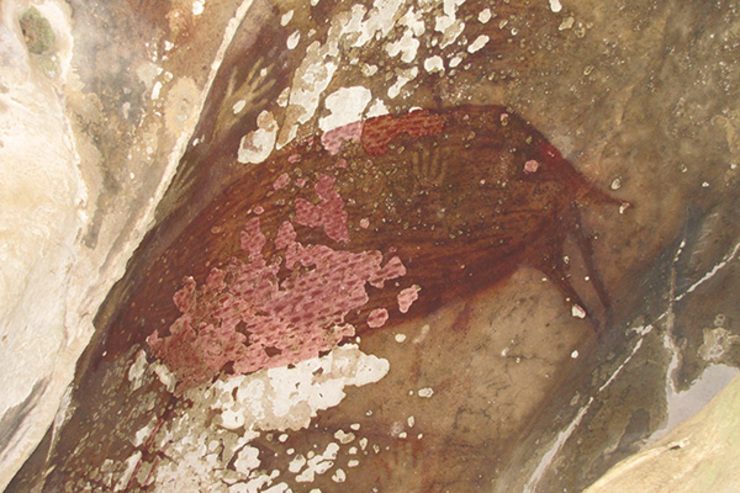SUMMARY
This is AI generated summarization, which may have errors. For context, always refer to the full article.

JAKARTA, Indonesia — Indonesia pledged Thursday to step up protection of ancient cave paintings that researchers say show that Europe was not the birthplace of art as many had long believed.
Authorities plan to place the caves, on the central island of Sulawesi, on a list of the nation’s official “cultural heritage” and are applying to have them included in UNESCO’s World Heritage List, a senior official told AFP.
“This is certainly something that Indonesia can be proud of. Of course, we must do our best to protect them,” said Andi Muhammad Said, head of the cultural heritage conservation office in South Sulawesi province, where the caves are located.
Among the paintings was the silhouette of a hand on a cave wall that is 40,000 years old, which was created by spraying reddish paint around an open hand pressed against rock.
The stencil was made about the same time — and possibly before — early humans were leaving artwork on cave walls around Europe that was long thought to be the first in the world, the Indonesian and Australian team reported in the journal Nature.
In the same cave, a painting of a pig was dated to about 35,000 years ago, they said.
Said said that the area around the caves had already been designated a “special zone” in a bid to protect them.
“We are now working towards establishing these historic caves as part of our national cultural heritage,” he added.
At the moment, officials are responsible for looking after 138 historic caves in Maros, South Sulawesi province, but Said said the current arrangement was disorganized with no central database of the individual sites.
Official recognition as part of the nation’s “cultural heritage” would prompt more central government involvement, and lead to better organization and protection, he said.
Authorities had already put the caves forward in 2005 to be included the UNESCO World Heritage List but the application was at an early stage, said Said.
He added that the discovery was “good for tourism in Indonesia. The cave art will surely attract visitors”.
Researchers say the discovery throws up two theories, both of which challenge the conventional wisdom around the history of human artistic expression.
Art either arose independently but simultaneously in different parts of the world — or was brought by Homo sapiens when he left Africa for a worldwide odyssey.
The team said it means that Europeans can no longer exclusively claim to be the first to develop an abstract mind anymore. —Rappler.com
Add a comment
How does this make you feel?





There are no comments yet. Add your comment to start the conversation.